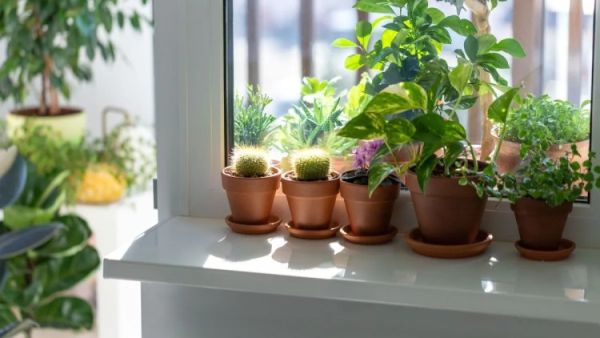
Health Benefits of Indoor Plants: In today’s society, when most people are preoccupied with stress and pollution, indoor plants are a natural haven. In addition to being just ornamental, they have the ability to make the inside of the home a more lively and healthy space. They enhance mood, promote health, and create a cozier atmosphere. Certain houseplants, such as peace lilies and snake plants, as well as larger types, such as ficus and areca palms, may provide a touch of greenery and have a number of health advantages.

In addition to adding a revitalizing element to the interior design of the house, indoor plants promote both mental and physical health. Having indoor plants or receiving horticultural therapy may help lower anxiety and enhance mental wellness. Additionally, trimming or touching plants promotes inner serenity and a feeling of achievement. Six advantages of having indoor plants at home are listed below.
Since indoor plants emit oxygen and absorb carbon dioxide, they are regarded as air cleansers. Indoor plants that enhance indoor air quality include spider plants, peace lilies, and snake plants. According to a NASA research, houseplants may eliminate up to 87% of air pollutants in a day, including those often present in everyday objects.
Having greenery around the home improves both productivity and mood. The wellbeing of employees and organizational productivity may both benefit from the presence of plants, particularly at workplaces. The office becomes a more inspiring place to work when bright plants like philodendrons, pothos, or ZZ plants are placed on the study table.
Indoor plants provide a relaxing effect that may greatly lower stress levels. A research published in the Journal of Physiological Anthropology suggests that houseplants might reduce stress. Even the simple act of caring for, stroking, or watering plants may have a calming impact. By lowering blood pressure, these activities may also help people feel calmer and more at ease.
Because of their capacity to absorb, deflect, and refract sound, certain plants—such as rubber, ficus, and areca palms—are useful for reducing noise in crowded places. Because of their exceptional ability to absorb sound waves, these indoor plants may help create a calmer and more serene atmosphere in your house.
Aloe vera, lavender, and jasmine are examples of indoor plants that have calming qualities and may improve sleep. By encouraging calm, these plants help people sleep better. They contribute to better air quality as people sleep by releasing oxygen at night. You might feel rejuvenated by adding a few plants to your bedroom.
Sometimes the air inside is dry, especially in the winter. Because they release moisture into the air, houseplants contribute to higher humidity levels. Spider plants are among the best recognized plants for raising indoor humidity. Furthermore, by increasing the humidity of the air, other indoor plants like areca palms and peace lilies may lower the risk of respiratory problems including dry coughs and sore throats.